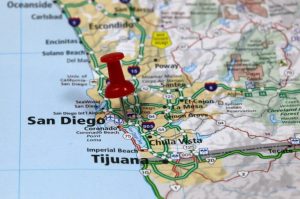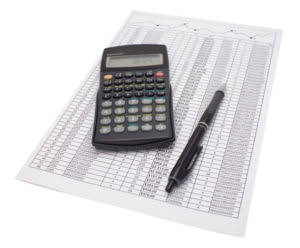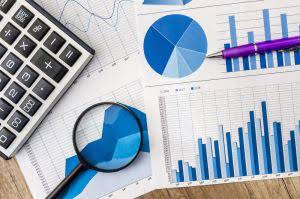
In this segment, cash inflows come from issuing stock or borrowing, while cash outflows include loan repayments, dividend payments, and stock buybacks. Raising cash through financing can support expansion, but excessive debt without revenue growth may pose risks. On the other hand, consistent dividends and stock buybacks signal financial strength and a commitment to shareholder value. To assess a company’s financial health, you have to understand its cash flow statement.
The indirect method of calculating cash flow

In such a case, money outflow results from the purchase of property, plant, equipment (PPE), and other investment instruments. Investors want to put their funds into a business with a strong cash flow. If you’re looking for people to invest in your business, you’ll need to know everything about your cash flow. They’ll be looking for a company that’s well versed in the way that they make and spend money. Again, cash flow simply describes the flow of cash into and out of a company. Profit is the amount of money the company has left after subtracting its expenses from its revenues.

Cash flow vs. income vs. profit vs. revenue
In short, investors want to see whether and how a company is investing in itself. Profit can tell you how much money a business has made over a period of time. However it does not tell you whether all the money was received during that same period. Cash Inflow is money coming into a business through any source of income generated by the company. Cash flow is the net amount of cash or cash equivalent moved in and out of a business over a specific period.
Cash flow from operations
- Derived from revenue generated by core business operations and reduced by various expenses.
- Since we received proceeds from the loan, we record it as a $7,500 increase to cash on hand.
- Similarly, a company with higher profits can generate a negative cash flow.
- Cash-flow is generated by business operations, investments, and financing.
- Adam received his master’s in economics from The New School for Social Research and his Ph.D. from the University of Wisconsin-Madison in sociology.
- Cash flows are reported on a cash flow statement, which is a standard financial statement that shows a company’s cash sources and use over a specified period.
- Cash equivalents are the assets that can immediately be turned into cash.
These three activities sections of the statement of cash flows designate the different ways cash can enter and leave your business. You’ll also notice that the statement of cash flows is Certified Public Accountant broken down into three sections—Cash Flow from Operating Activities, Cash Flow from Investing Activities, and Cash Flow from Financing Activities. With the indirect method, you look at the transactions recorded on your income statement, then reverse some of them in order to see your working capital. You’re selectively backtracking your income statement in order to eliminate transactions that don’t show the movement of cash. Let’s take a closer look at what cash flow statements do for your business, and why they’re so important.
- Emergencies such as economic downturns, natural disasters, supply chain disruptions, or sudden regulatory changes can significantly impact cash flow projections.
- Cash flow statements are powerful financial reports, so long as they’re used in tandem with income statements and balance sheets.
- A cash flow measure can also incorporate longer-term expenses and income that needs to be factored in, like pending charges from contractors or products sold on consignment.
- Valuation determines a company’s current value by analyzing financial forecasts of its profits, typically through dividends or cash flows.
- While there is a difference between cash flow streams, in any given period of time, a business may be pulling in cash from all three sources.
- Profit is the amount of money the company has left after subtracting its expenses from its revenues.
📆 Date: May 3-4, 2025🕛 Time: 8:30-11:30 AM EST📍 Venue: OnlineInstructor: Dheeraj Vaidya, CFA, FRM
It is calculated by taking cash received from sales and subtracting operating expenses cash flow definition and example that were paid in cash for the period. Greg purchased $5,000 of equipment during this accounting period, so he spent $5,000 of cash on investing activities. Now that we’ve got a sense of what a statement of cash flows does and, broadly, how it’s created, let’s check out an example. A balance sheet shows you your business’s assets, liabilities, and owner’s equity at a specific moment in time—typically at the end of a quarter or a year. Learn how to build, read, and use financial statements for your business so you can make more informed decisions. A one-year cash flow projection is better suited for short-term budgeting, managing operational expenses, and ensuring liquidity.
It is the value acquired by deducting all Law Firm Accounts Receivable Management the expenses from the revenue. On the contrary, cash-flow is the inward and outward movement of money from the business. It provides the closing cash balance of the firm after deducting all money outflows from money inflows.
- Other expenditures that generate cash outflows could include business acquisitions and purchasing investment securities.
- Investors can analyze cash flow by viewing a company’s cash flow statement, which provides a detailed breakdown of how cash moves into and out of the business during a specific period.
- They’ll make sure everything adds up, so your cash flow statement always gives you an accurate picture of your company’s financial health.
- Many businesses, especially smaller business owners, suffer as a result of unpaid invoices, which can affect cash inflows and outflows in both the short term and long term.
- For instance, many financial professionals consider a company’s net operating cash flow to be the sum of its net income, depreciation, and amortization (non-cash charges in the income statement).
For instance, this business owner predicts a spike in December for the holiday season, as well as a dip in January as customers focus on new diet goals. We accept payments via credit card, wire transfer, Western Union, and (when available) bank loan. Some candidates may qualify for scholarships or financial aid, which will be credited against the Program Fee once eligibility is determined.
It includes short-term government bonds, marketable securities, treasury bills, commercial papers, money market funds, and other short-term investments. Cash flow indicates if a business has enough money for its operation. The goal is to create a strong enough cash flow so that your business makes a profit, rather than just breaking even. If you understand your inflows and outflows, you’ll understand your business better. If you can’t get enough of learning about finance and business, head over to our resource hub! We’ve got plenty of educational material for you to browse through.

When discussing cash flow, there are generally three types that you need to know about. These types of cash flow all differ in origin, as well as analysis. Cash flow refers to the amount of money moving into and out of a company, while revenue represents the income the company earns on the sales of its products and services.
